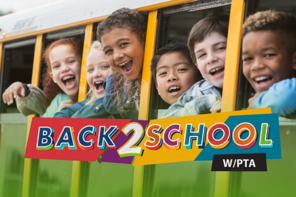Did you know that nine out of 10 teachers spend at least three weeks re-teaching lessons at the start of the school year to help students catch up? This loss of learning—known as the ‘summer slide’—varies in intensity from child to child, based on factors like age, income-level and even the child’s access to internet connectivity.
Access to internet connectivity? Yes. Internet access is becoming more and more relevant to education as we get further into the 21st century. The Internet Society reports that many educators use online materials to prepare lessons for their students, and class projects these days can involve creating PowerPoints and editing videos. Lessons in digital literacy—the ability to use information and communication technologies to find, evaluate, create and communicate information—are growing more critical as the internet becomes the primary way students research topics.
Prevent Summer Slide
You can do your part to combat the summer slide and increase your child’s digital literacy by encouraging them to take advantage of the great educational platforms available. Some good ones include CrashCourse, TED-Ed, BrainPOP, Khan Academy, Reading Rockets, Reading is Fundamental and National Geographic Kids. Platforms like these cover a wide range of lessons and are useful for kids of all ages and abilities, so your child is sure to find something they like!
Unfortunately, while there are many different online learning resources that are great for summer learning, some students—especially those from low-income families—are unable to access these resources because they lack an internet connection. It is estimated that 17% of children nationwide do not have access to a computer, and as a result these students miss out on vital learning time.
And there are consequences to this. Studies show that while most students lose about two months of mathematical skills over the summer, low-income children tend to lose an additional two to three months in reading. This difference in levels of knowledge retained over the summer is just one of the places where the “homework gap” appears among children. The “homework gap” refers to the difficulty some students have in completing coursework because they lack internet access at home.
Luckily, there are other ways to access a computer if you do not have one at home! A great place to go for internet access is your local library. Libraries are free for people to use and they have access to computers and books, so they are great places for students to go and learn.
Get Connected: Internet Matters
Internet cafes, also known as Gaming Centers, are also a great place to visit for internet access. They offer computers for public use, but know that it is usually for a fee. Many community centers in big cities also provide computers for public use, so be sure to check with your local government to see if your city has these centers.
No child’s education should have to suffer because they cannot afford to have internet access at home. That’s why organizations like Access from AT&T have created low-cost internet solutions to help families bridge the homework gap.
They have also created event plans for Summer Learning Listening Sessions that your local PTA can host over the summer. Listening Sessions are designed to help students at your school stay on track with summer learning and can be added on to your regular PTA meeting.
For more information on summer learning and resources for parents, visit the PTA Connected with Access from AT&T Summer Listening Sessions toolkit.
Lily Warden is a communications intern for National PTA.





